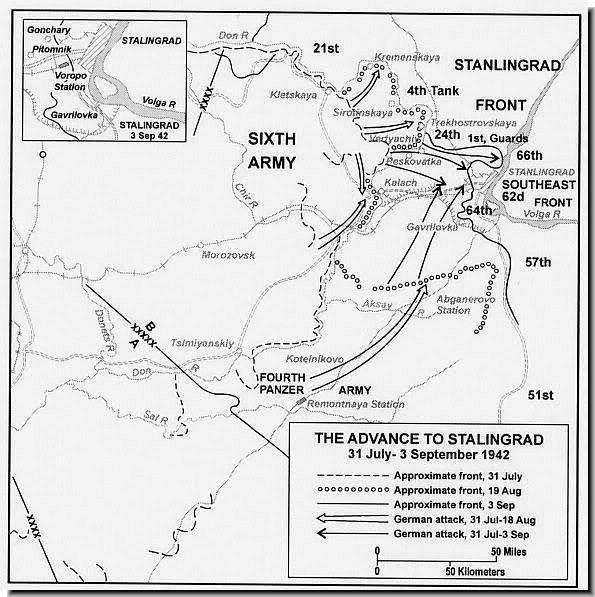I think you guys need to go back to the Blue ( and Brunswick) directives.
The Caucuses is the point of the offensive. Germany is now at war with the US and UK as well as the USSR. It’s a resource poor state it believes it needs oil. It has scraped the bottom of the barrel in terms of German Infantry for the Offensive and all but AGS are severely under strength. This is the last offensive possible in Russia before the skies over germany grow dark with allied planes and the Atlantic gets a steel top.
http://www.reocities.com/pentagon/1084/hitler_directives/dir41.htm
The underlying belief is that the Russians have expended the bulk of their reserves and are, once again, just about to collapse. Everything about both operations is coloured by this belief. Which Fridericus & MARS and the near collapse of the Soviet defensive systems in the AGS area do nothing to counteract.
Technically it is called a delusional state. The voices made them do it.
The Germans also acknowledge they do not have the strength to do everything at once and the Priority is the destruction of Soviet forces west of the Don then the Caucuses oilfields.
The original Blue version says take Stalingrad or bring it under artillery fire. Its actually quite prescriptive about tactics and the nature of encirclements.
Three weeks later is Brunswick. They think they have destroyed the forces west of the Don and with only weak forces escaping west. The belief is that the strong forces have escaped to the Caucuses. And that new forces are being established at Stalingrad. The orders are to ‘smash’ the defences at Stalingrad, and then proceed on to Astrakhan. (297.1 again)
The air section of the order says
‘In view of the decisive importance of the Caucasas oilfields for the further prosecution of the war, air attacks against their refineries and storage tanks, and against ports used for oil shipments on the Black Sea, will only be carried out if the operations of the Army make them absolutely essential. ‘
Can the Germans Take Stalingrad on the Bounce’ not really – the Orders are to for short distance encirclements which involves fighting after the pocket is formed so while a recon element might get to Stalingrad OTL whatever forces that were there were initially able to fight off a Panzer Korps so its going to need to be pretty meaty or get stomped by girls.
By 13 september though its 78k germans with 120 tanks vs 52,500 soviet with 100 tanks – defending a city. Its after only a month or so fighting that the Soviets are relatively ground down and the Germans have a local 2:1 superiority.
As far as the Luftwaffe is concerned nominal strength would be Luftflotte 1 332a/c Luftflotte 4 1400a/c Luftflotte Ost 520 a/c. Actual strength 40-60% of that on any one day.
Operationally the problem is they can only really gain air superiority using LF4 ( or more accurately over one Army Group Sector) at a time. That’s one of the reasons why the 42 Operations a specifically in sequence.
